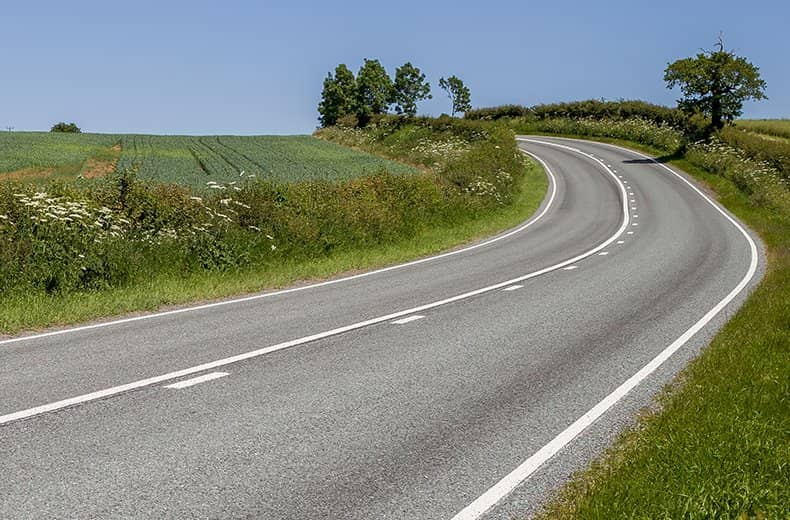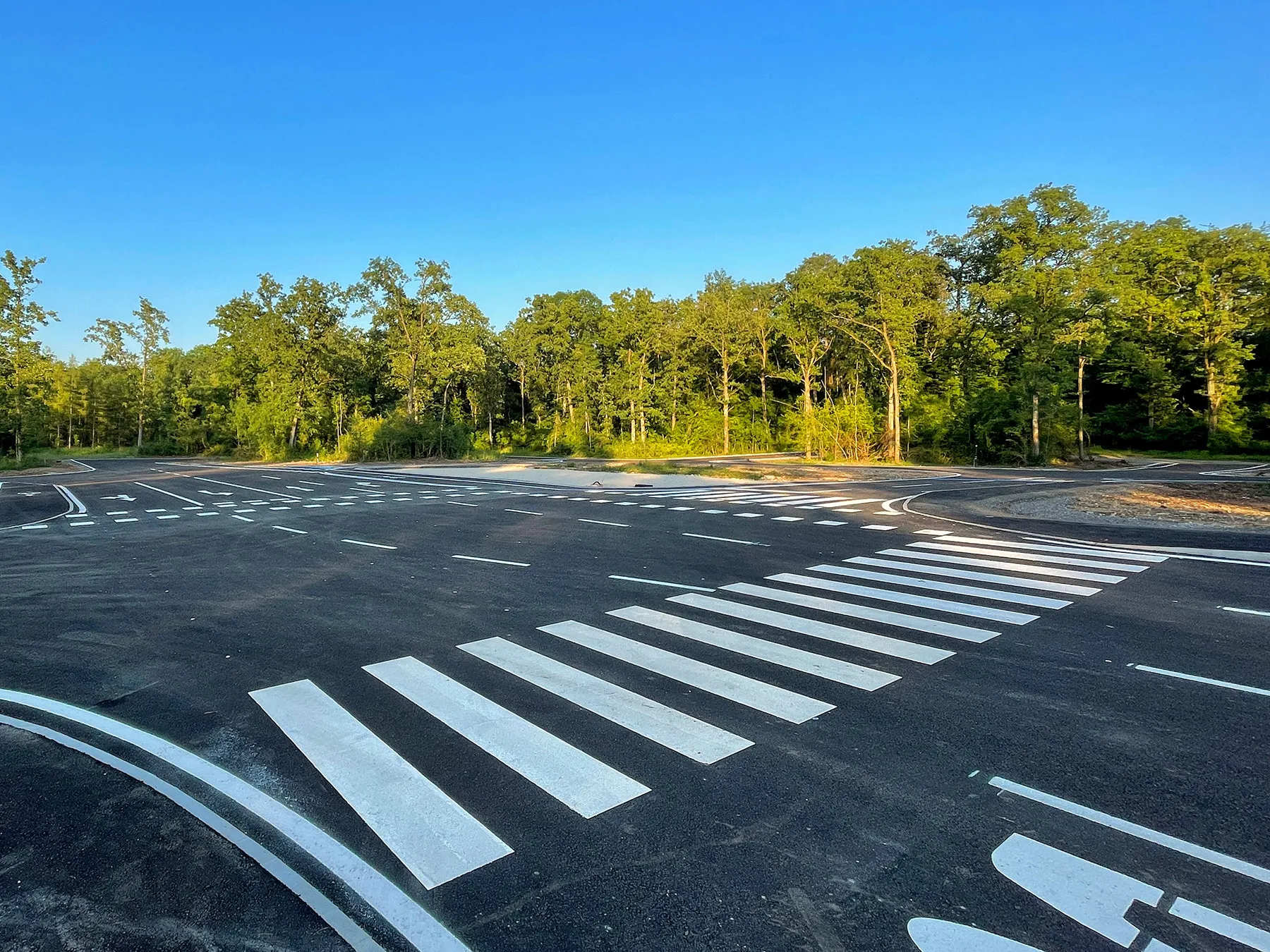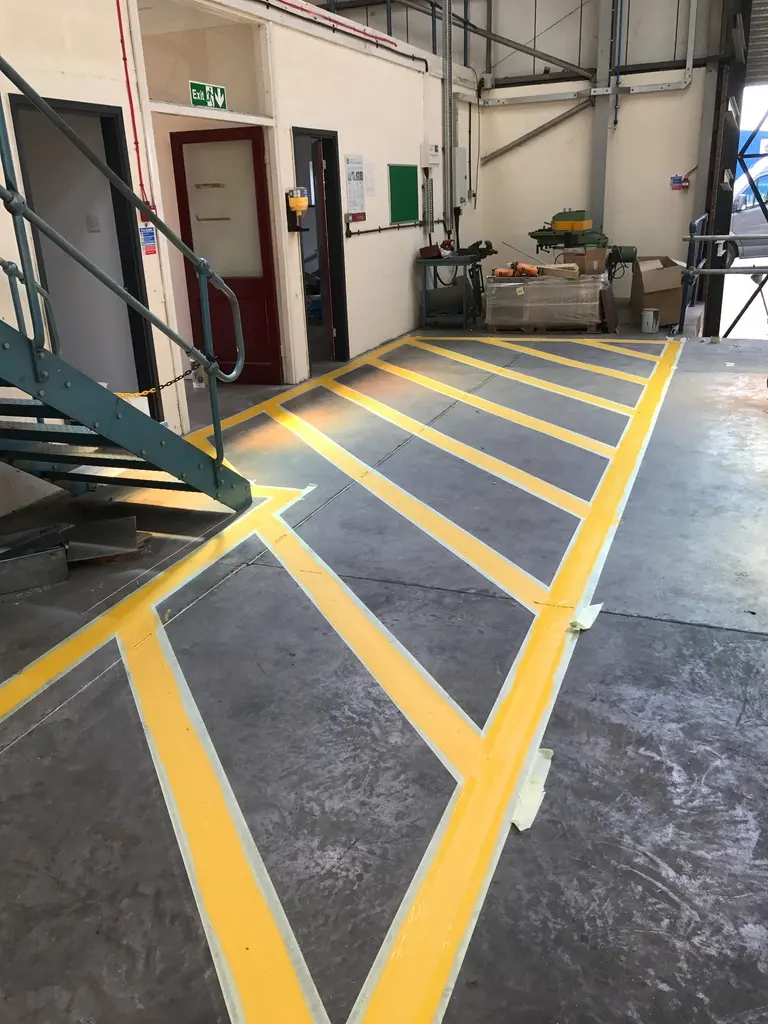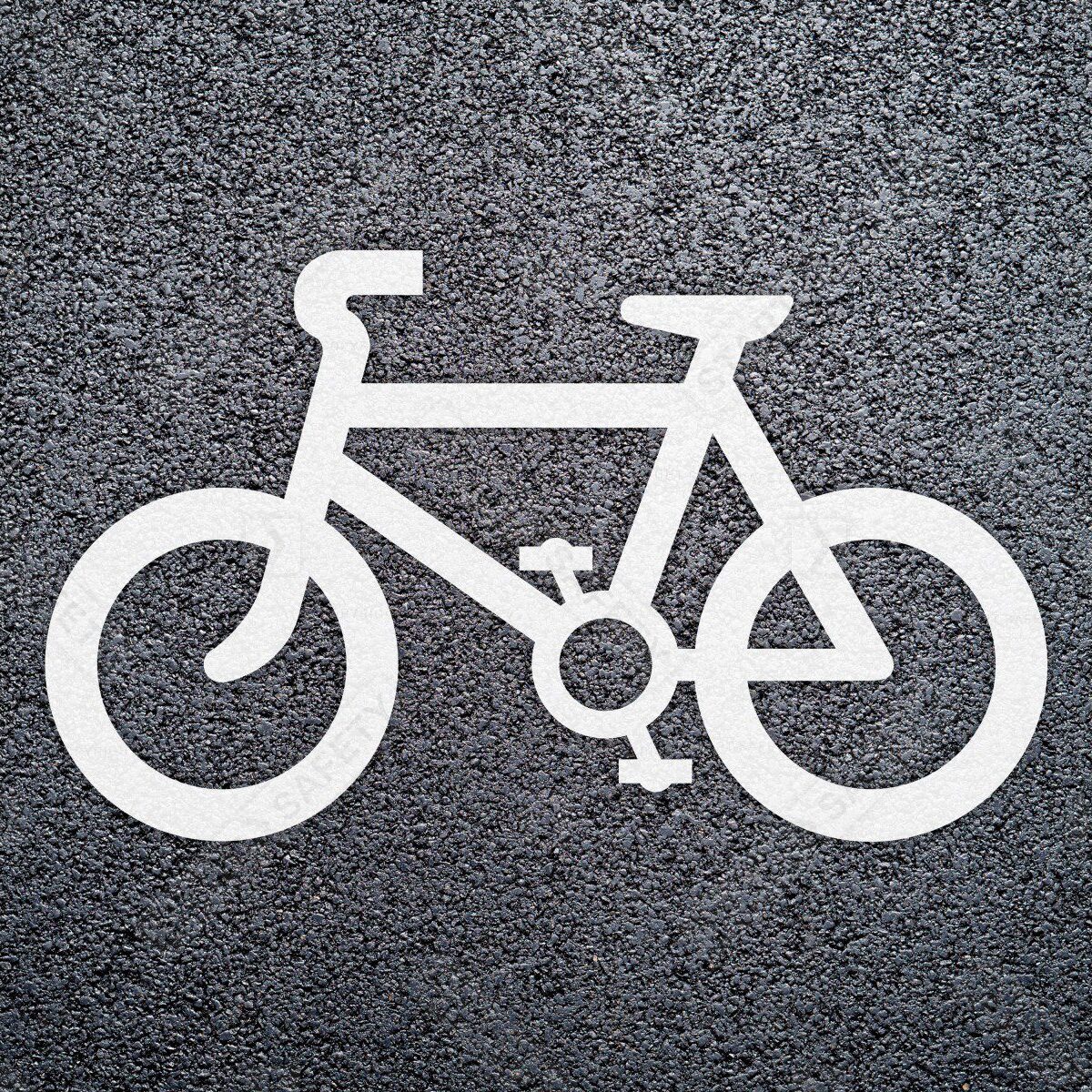We all know that line markings are crucial when it comes to health and safety and with there being so many variations it is hard to tell what a certain line marking’s purpose is.
When looking at each line markings purpose it is important to look out for different colours, thicknesses and symbols that are used within line markings to be able to differentiate between them.
For example, the colour white represents separation, yellow is for caution and red is for high-risk zones. At the same time, thin lines might guide pedestrian traffic while thicker lines command attention. Universally recognised symbols like the floor road marking of a bicycle further enhance the visual communication system.
The combination of colour, thickness, and symbol ensures everyone in the workplace, regardless of language, understands the safety protocols and potential risks around them.
Within this blog, we are going to explore the different types of line markings and each of their specific purpose while also uncovering the many benefits effective line markings bring to your workplace. From reducing accidents to boosting safety awareness amongst your employees.
The Different Types of Line Markings for Improved Safety
As mentioned above there are many different types of line markings that can be implemented to improve health and safety. Here is a breakdown of some of the most common line marking types and how they can be applied to improve safety.
Solid white lines
Solid white lines are the most common markings. Their main purpose is to separate traffic lanes. Imagine a factory floor that is bustling with forklifts and pedestrians. Solid white lines create designated lanes for vehicles, preventing accidents and confusion. Just like how they do on the roads we drive on every day, they ensure a smooth flow of traffic, keeping everyone moving in the right direction.

But safety isn’t just about the safety of vehicles. Solid white lines clearly define safe walkways for pedestrians, creating a separation between pedestrians and vehicles, this visual separation reduces the risk of collisions and keeps pedestrians protected.

But there are many variations when it comes to white line markings, they can come in various thicknesses depending on their application. Thicker lines are often used in high-traffic areas to create a more prominent visual cue, whereas thinner lines might be used to separate pedestrian walkways from less busy work zones. White lines can also be dashed at junctions or merging points to indicate areas where drivers should take extra caution.
Yellow Lines
Yellow line markings have a similar purpose as white lines, but instead, they indicate that caution should be taken. They serve multiple purposes to keep everyone alert and aware of potential hazards that are around. These lines may seem simple but they are key to safety within a workplace.
The most common type of yellow line marking is hazard warnings. These lines serve as a constant reminder for road users to exercise caution and be mindful of potential dangers in these designated areas. Another way yellow markings can be used is to make road users aware that the road is uneven, by using this type of line marking warns drivers to adjust speed and driving style.

The use of yellow line markings to improve safety is paramount. The markings enhance safety awareness, and the bright yellow colour instantly grabs attention, which reminds people to be cautious and follow designated protocols. These markings reduce many accidents every year because by clearly demarcated walkways, parking zones and hazard areas, yellow lines can prevent confusion and reduce the risk of collisions between pedestrians and vehicles.
Symbols
Line marking symbols are another way we can ensure our roads and workplaces are safe. These symbols like other line markings bypass spoken languages ensuring each road user is safe and understands the rules of the roads.
For example, road line marking symbols such as a bicycle painted on the road indicate cycle-dedicated areas, this allows drivers to drive with caution and it also lets cyclists know where they should cycle for their safety. Another example of a road symbol is arrows, these arrows direct road users on which way traffic should be flowing and where they should be heading, again ensuring optimal safety.

Maintaining Line Markings for Future-Proof Safety
Line markings are often an aspect that is majorly overlooked but are crucial for the safety of employees and road users. It’s not only important to implement these line markings but maintaining them is just as important. Here is how you can maintain your line markings.
Carrying out regular inspections to assess the condition of the markings. Over time, these markings will fade and gain some wear and tear, regular inspections help identify these issues before they become too much of a hazard. If you have noticed that your line markings are fading or have faded then you will want to get in touch with a line marking company, like ourselves, to carry out maintenance works to ensure the markings stay efficient.
Understand how wear and tear can affect your line markings. The frequency of having your line markings freshened up isn’t the same for everyone. For example, high-traffic areas, like busy factory floors or heavily congested roads are naturally going to experience more wear and tear.
Make sure you are considering your environment, is it a high-traffic zone with constant vehicle movement? If so you may want to consider how often you are going to have them maintained.
Choose the right line-marking company for your needs, not all line-marking companies use the same material. Different materials offer varying layouts for durability. We recommend that in high-traffic areas with constant wear and tear, a more sturdy and long-lasting material might be necessary. Another example is a pedestrian walkway with low traffic volume that might be able to use less durable material. Always consult with a professional line marking company about the most appropriate material for your areas of concern. Feel free to drop us an email and we can let you know your best option.
Line markings are the most crucial aspect when it comes to safety, they act as a visual language that everyone understands. From separating pedestrian walkways to making road users aware of hazards, the markings are the foundations of road safety. Regular inspections and proper maintenance will ensure a continued safe environment, promoting a safer environment for everyone.

